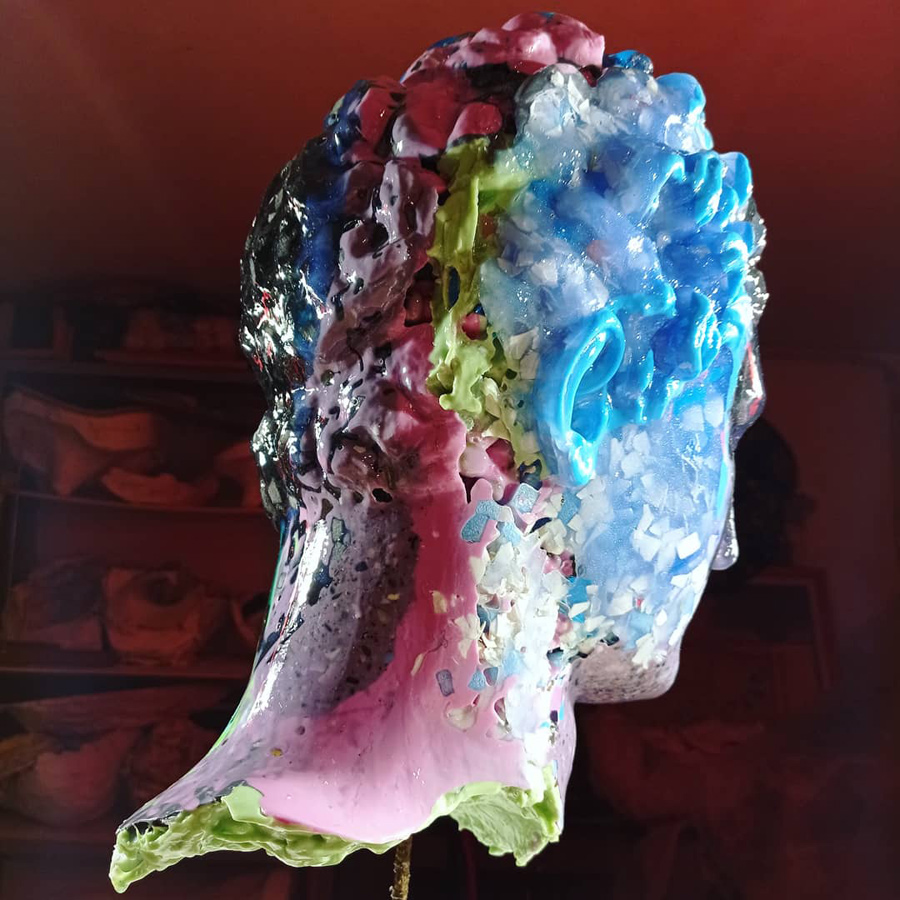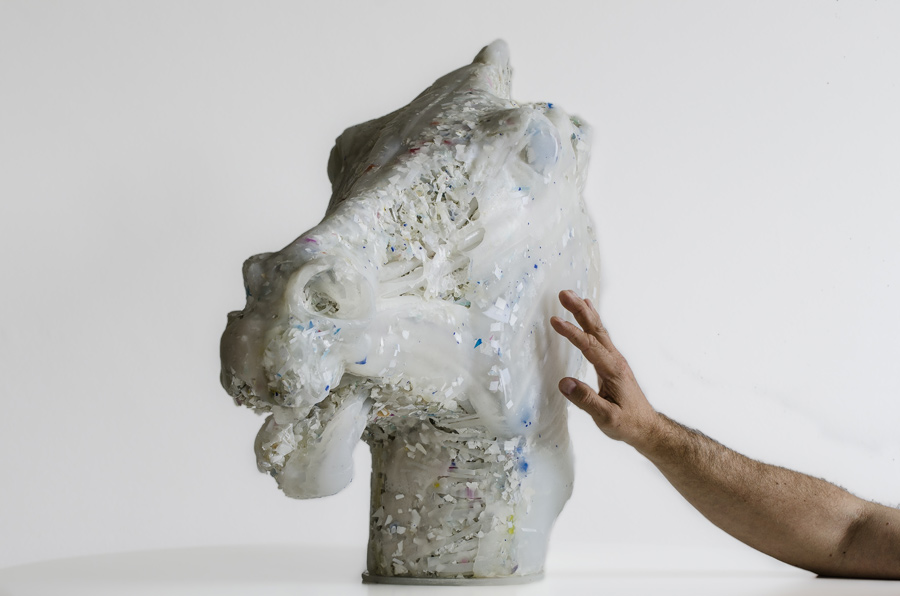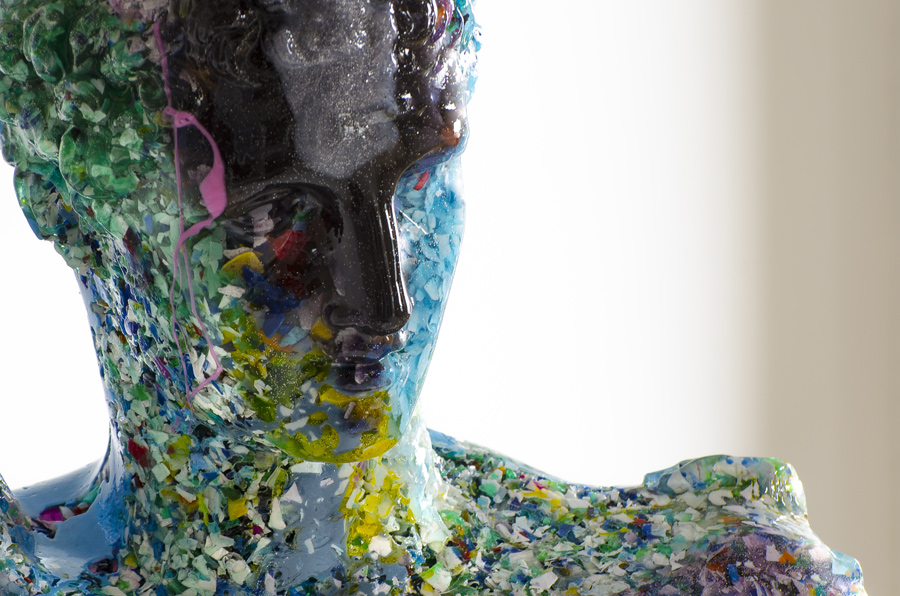Bencore ever more oriented to sustainability with sculptures by Paolo Nicolai
With the production waste the Company supports the artist Carrarese in the development of his project Distopica Art.
Nowadays, there is widespread talk of environmental sustainability: it is a matter of awareness that drives all of us to behave morally, protecting the harmony of our planet and preserving its delicate state.
But it doesn’t end here: even the Artists are faced with this green wave, in fact they can capture with their sensibility new creative opportunities that are based on the fundamental concepts of recycling and re-use. And this is the essence that the Architect and Sculptor Paolo Nicolai and Bencore are experiencing.

Bencore is renowned worldwide by architects and designers for the unmistakable honeycombs that stimulate so much creativity based on innovative applications of materials and advanced technologies.
Since the company’s strategy and choice has been orientated towards a sustainable production and recycling of production waste, Bencore in collaboration with artist Paolo Nicolai, a Carrarese architect who, after years of a successful career, is dedicating his resources to develop a project of Distopica Art: a free style of self-reflection that, in the case of Nicolai, gives new life to a good part of those notorious Plastic materials, being used or deriving from the scraps of the different waste products.
We are talking about PET, PVC, HDPE, PMMA, or Plexiglas, and Polycarbonate, just to mention a few: we also add to them the waste that comes from the production of Bencore alveolar panels with their different cores, colors and transparencies. These are the basic ingredients for the sculptures, classical inspiration, but with a clear post-modern message, that Paolo Nicolai is proposing to a very receptive audience who are able to appreciate the absolute value of these works.

‘The meeting with Paolo Nicolai – says Giorgio Bianchini CEO of Bencore- was almost “romantic”. We got on well and immediately we had many elective affinities. We produce materials for design and architecture, we don’t aspire to make art, but we are very happy that what we define as “waste” production becomes part of an artistic project as original and intense as that of Nicolai. ’
Paolo Nicolai tells us about the concept that led him to create these unique sculptures: the drive from the beginning was to give a second life to the plastic and refine it, using the production waste. Retrieving and creating keeping to the rules of the circular economy, extending the life cycle of the waste to infinity, exceeding the limits of time and routine that regulates the industrial world.
The sculptures that Nicolai creates are made of a material traditionally considered as poor: the plastic which has finished its functional cycle or becomes a production waste to be disposed of. Nicolai searches for collects these scraps of the industrial process waste, certifying work by work the actual percentages of recuperatio needed, creating art, persistent and destined to last , as if it were new marble, unless you decide to proceed with the recycling of the work itself, creating a new cycle.
Hence a further development of the project moving in the direction of a performance art that we will reveal shortly.

It’s like saying that materials that we can not get rid of, for the good of our planet Paolo Nicolai uses them for his sculptures, giving them new life and decorum countless times. The original inspiration is one of classical art because it never goes out of fashion: Nicolai starts from here. However, even the most classical sculptures, like that of Greece ( fourth century) or of Canova for example, communicates with a multidisciplinary creative process, ironic and provocative which Nicolai defines as a ‘future archaeology’ as well as its ‘new horizon of freedom’. A POP horizon,cosisting of incredible chromatic effects that the artist designs’ exploiting the technique of the Itten circle. There is no seriality in this line : each work is different from the other and they all have their own code of originality.
The sculptures of Paolo Nicolai are displayed inside the Galleria ‘Al Forte Arte’ by Patrizia Grigolini, a long-time reference point for fans of contemporary art.



